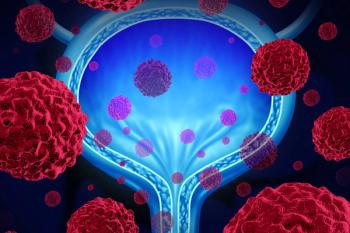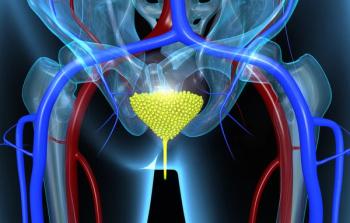
NCCN: New Bladder Cancer Guidelines Include Updated Staging, Immunotherapy Options
The updates to the guidelines reflect recent advances, including recommended immunotherapies and changes in tumor staging.
The National Comprehensive Cancer Network (NCCN) Guidelines® for invasive bladder cancer management have been updated in light of recent advances, including recommended immunotherapies and changes in tumor staging that reflect improved understanding of this cancer’s natural history, according to an update presented the 2019 NCCN Annual Meeting, held March 21–23 in Orlando, Florida.
“The landscape in the treatment of bladder cancer has changed rapidly in the last several years,” said
Incidence rates for bladder cancer have not changed for 40 years, and it remains the fourth most commonly diagnosed malignancy. Seventy-five percent of patients initially present with noninvasive bladder cancer-in situ disease (Tis) or T1 tumors that have invaded only the lamina propria, a subepithelial connective tissue, Flaig said.
“Once tumor invades the muscularis propria, it is muscle-invasive disease, and all eligible patients should be offered curative treatment,” he said. “Progression to incurable metastatic disease [once muscle invasion occurs] is expected, unless the patient receives definitive local therapy.”
The first step is to determine whether a patient is a candidate for cystectomy, he said. Under the new 2019 guidelines, patients who are eligible should undergo abdominal and pelvic CT or MRI imaging, chest imaging, and a bone scan if bone metastasis is clinically suspected. Primary treatment is neoadjuvant cisplatin-based combination chemotherapy and subsequent radical cystectomy or partial cystectomy in highly-selected patients with solitary lesions and no Tis, or cystectomy alone if patients are ineligible for cisplatin-based chemotherapy.
“That [cisplatin] is a difficult chemotherapy for many patients and, frankly, many are not eligible,” Flaig noted.
Tumor staging has also been updated in the new guidelines to reflect the 8th edition of the American Joint Committee on Cancer (AJCC) Staging Manual: N1 and N2 disease had been prognostically classified as stage IV previously, but N1 is now in the IIIA group, and N2 and N3 are classified as IIIB. Patients with stage IIIA (cT3, N0; cT4a, N0; and Ct1-T4a, N1) bladder cancers are to undergo abdominal and pelvic CT or MRI, chest imaging, and bone scan (if bone metastasis is suspected), and are then recommended to undergo neoadjuvant cisplatin-based chemotherapy plus radical cystectomy, or concurrent chemoradiotherapy. Patients who are not eligible for cystectomy undergo radiotherapy with or without chemotherapy.
The recommended primary treatment for stage IIIB disease includes systemic therapy to downstage, followed by tumor reassessment 2 to 3 months after treatment, or concurrent chemoradiotherapy. Patients who undergo systemic therapy and experience progression are treated using recommendations for metastatic disease, whereas complete responses are treated with subsequent consolidation cystectomy or chemoradiotherapy, or observation. Patients experiencing a partial response undergo cystectomy or chemoradiotherapy or are treated using guidelines for metastatic disease.
The mutation load of bladder cancers is higher than those reported for any other cancer types except lung cancer and melanoma. That should translate to increased immune antigenicity. The new NCCN Guideline® includes atezolizumab and pembrolizumab as a preferred first-line treatment option for cisplatin-ineligible patients whose tumors express programmed death ligand 1 (PD-L1), or who are not eligible for any platinum-containing chemotherapy regardless of PD-L1 expression.
The new recommendations for first-line systemic therapy in cisplatin-eligible patients with locally advanced or metastatic bladder cancer include gemcitabine and cisplatin or accelerated methotrexate, vinblastine, doxorubicin, and cisplatin [DDMVAC] with growth factor support.
Post-platinum–based chemotherapy, subsequent systemic therapy recommendations for patients with locally advanced or metastatic disease include immune checkpoint inhibition with pembrolizumab (the preferred regimen) or atezolizumab, nivolumab, durvalumab, or avelumab.
Following immune checkpoint inhibitors, subsequent systemic therapy recommendations now include gemcitabine/carboplatin for cisplatin-ineligible, chemotherapy-naïve patients, or cisplatin and gemcitabine or DDMVAC with growth factor support for cisplatin-eligible patients, Flaig noted.
Important questions remain, he said. Ongoing clinical trials are assessing combined checkpoint inhibition regimens and checkpoint inhibition immunotherapy plus chemotherapy, as well as neoadjuvant immune checkpoint inhibition, he said.
Newsletter
Stay up to date on recent advances in the multidisciplinary approach to cancer.

















































































